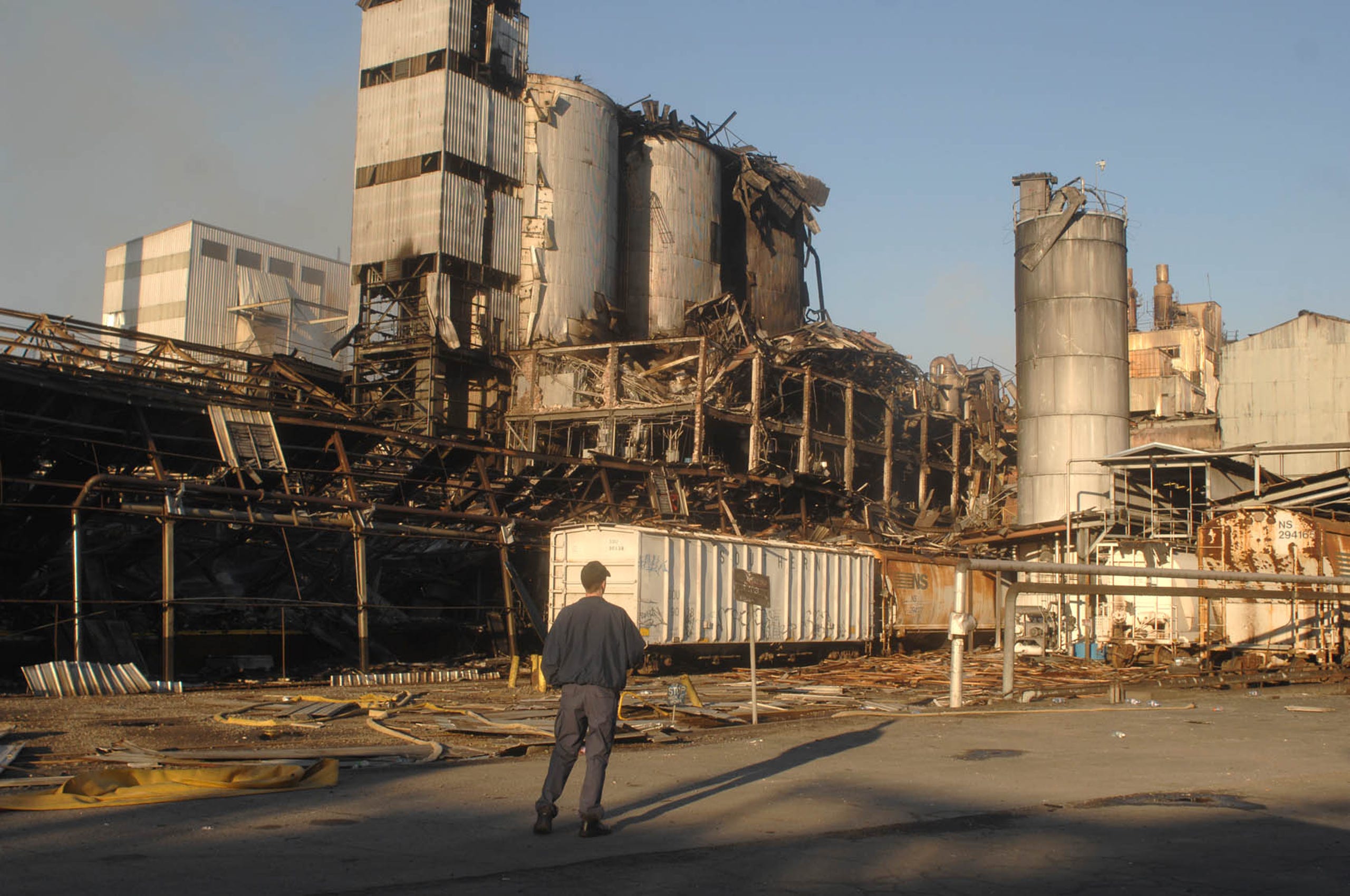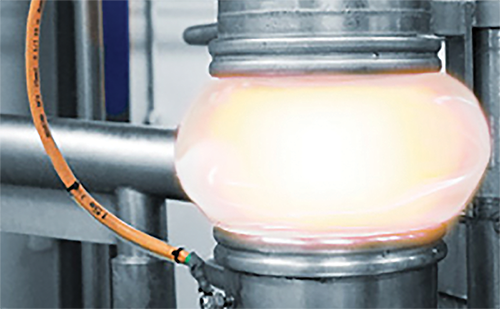Understanding combustible dust explosion risk
Major combustible dust accidents have occurred in the US in recent years causing immense damage and fatalities, and sometimes bringing down entire facilities. A surprisingly large number of products - from food, dyes, chemicals to metals - have the potential to become combustible in dust form.
Yet many processing plants are unaware of the risks of combustible dusts or how to prevent and mitigate them. Just a thin layer of dust in a closed room is enough to trigger an explosion if the dust becomes airborne and is ignited by some form of heat, such as sparks from process equipment or electrostatic discharge (ESD).
In an industrial setting, a dust explosion risk is present wherever powdered materials escape the processing equipment and settle on horizontal surfaces, such as on the top of the machinery, roof support components, elevated ductwork and cable trays.
This dangerous combustible dust can explode and in turn, cause a secondary explosion that are often many times the size and severity of the primary explosion. A secondary dust explosion can occur when the blast wave from a primary explosion entrains dust layers present in the plant, creating a large dust-air flammable mixture ignited by the first explosion.
See also:
[catlist name="ask-baxter" excludeposts=this numberposts=3]
The 2008 explosion at Imperial Sugar Company in Port Wentworth (Georgia) is an illustration just how dangerous combustible dust can be. Causing 14 fatalities and injuring 36 people, the explosion was fueled by massive accumulations of combustible sugar dust throughout the packaging building.

BFM® helps prevent combustible dust explosions
The number one priority is dust control. Conducting a DHA and installing a dust collector system is key, but another major component is ensuring transition points between process equipment - the most common dust leakage area - contains your product a 100%.
Having a 100% seal is particularly challenging when using pneumatic transportation through your process, as the seal of traditional clamp-type connectors deteriorates significantly under higher pressures. If you do have dust leaking anywhere in your process, you must ensure it is cleaned up as soon as possible.
This is why switching to BFM® fitting from hose-clamp connections can be so beneficial - It is the only flexible connection system that provides a 100% sealed dust-free transition, will dissipate static electricity build-up, and has been proven to resist explosions over 60kPa (8.7PSI, .6Bar).
Contain any primary explosions that happen inside your equipment.
Containing any initial explosion to be entirely within the machinery must be a priority to ensure you reduce the risk of a serious fire, secondary explosions, and injury to staff.
Machinery with built-in explosion relief ports and panels are designed to channel flames and gases from an internal explosion up and out of the building to avoid any significant injury or damage on the ground. However, when there are multiple pieces of connected machinery in a process line, the weakest point for the potential escape of these explosive flames and gases is often at the transitions, or flexible connections, between machinery.
Traditional hose-clamped flexible connectors don’t tend to withstand these extreme forces, giving way quickly and allowing the explosion to propagate, potentially leading to a deadly secondary explosion.
BFM® fitting reduces explosion risk.
 BFM® connectors seal from the inside under operational pressure. The flexible metal cuffs on each end of a BFM® connector pushes outward against the inside of the spigot, consequently tightening and improving the seal.
BFM® connectors seal from the inside under operational pressure. The flexible metal cuffs on each end of a BFM® connector pushes outward against the inside of the spigot, consequently tightening and improving the seal.
BFM®’s unique materials also provide proven1 static dissipation options, helping to prevent electrostatic build-up and arcing within the equipment, reducing the risk of a primary explosion. These anti-static properties, along with the unique connector design, give BFM® fitting’s product range preferential ATEX ratings, significantly reducing customers’ compliance risk and associated costs.
If an explosion does occur inside your process, the superior strength of BFM®’s materials and the snap-fit spigot system will help contain the explosive gases and flames within your machinery, reducing the risk of a secondary explosion.
BFM®’s popular Seeflex 040E fittings have undergone extensive testing2 and are proven to contain internal explosions in excess of 60kPa (8.7psi, .6Bar). In addition, to further reduce the risk of consequential fires, BFM® Kevlar covers have also been tested to withstand explosive pressures of more than 100kPa (14.5psi, 1Bar).
Major global manufacturers like AkzoNobel, Nestle, Unilever and Mondelez trust BFM® fitting to help keep their factories clean and reduce their combustible dust explosion risk.
- Undertaken by IBExU 2. Undertaken by Rocket Labs.
